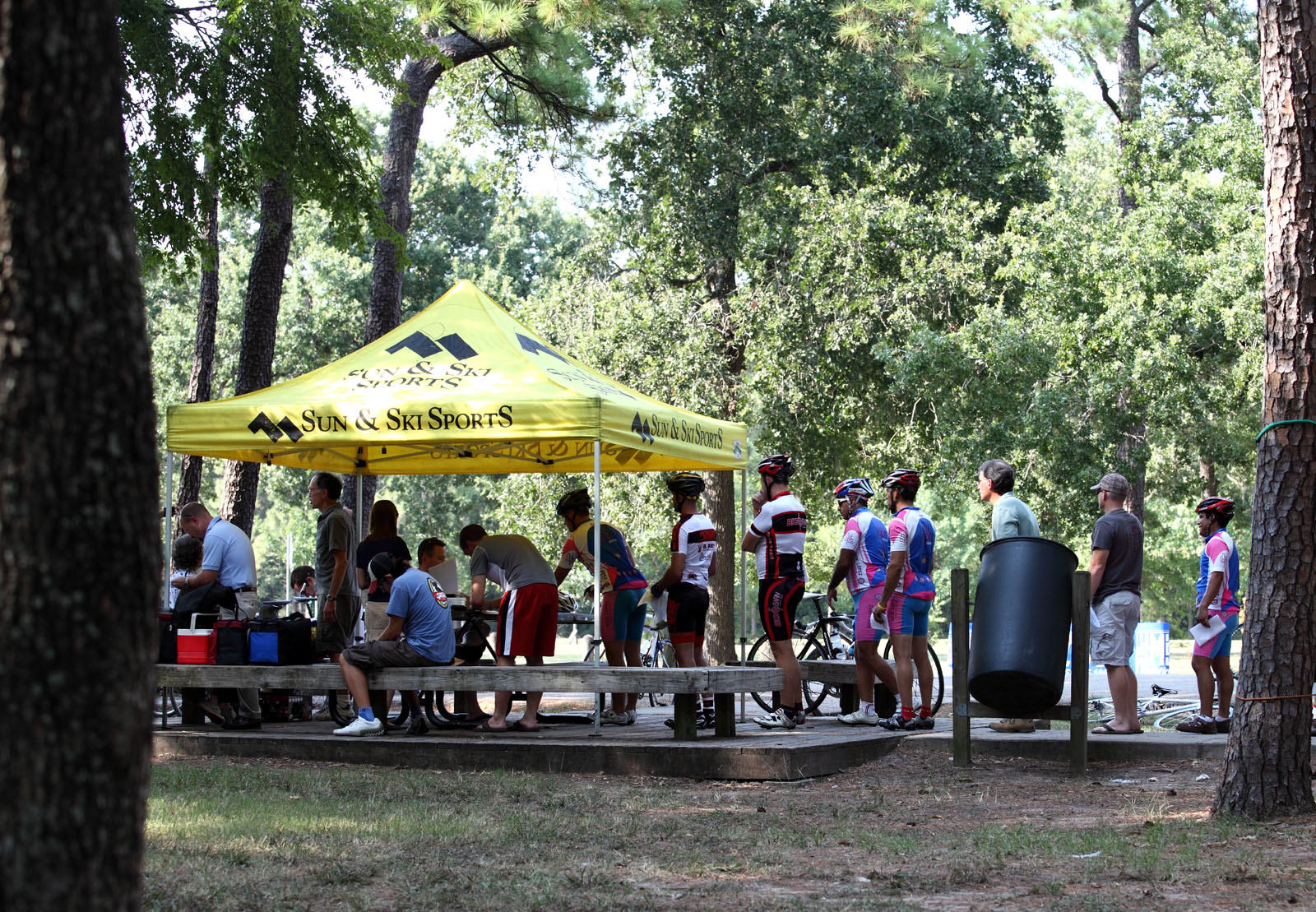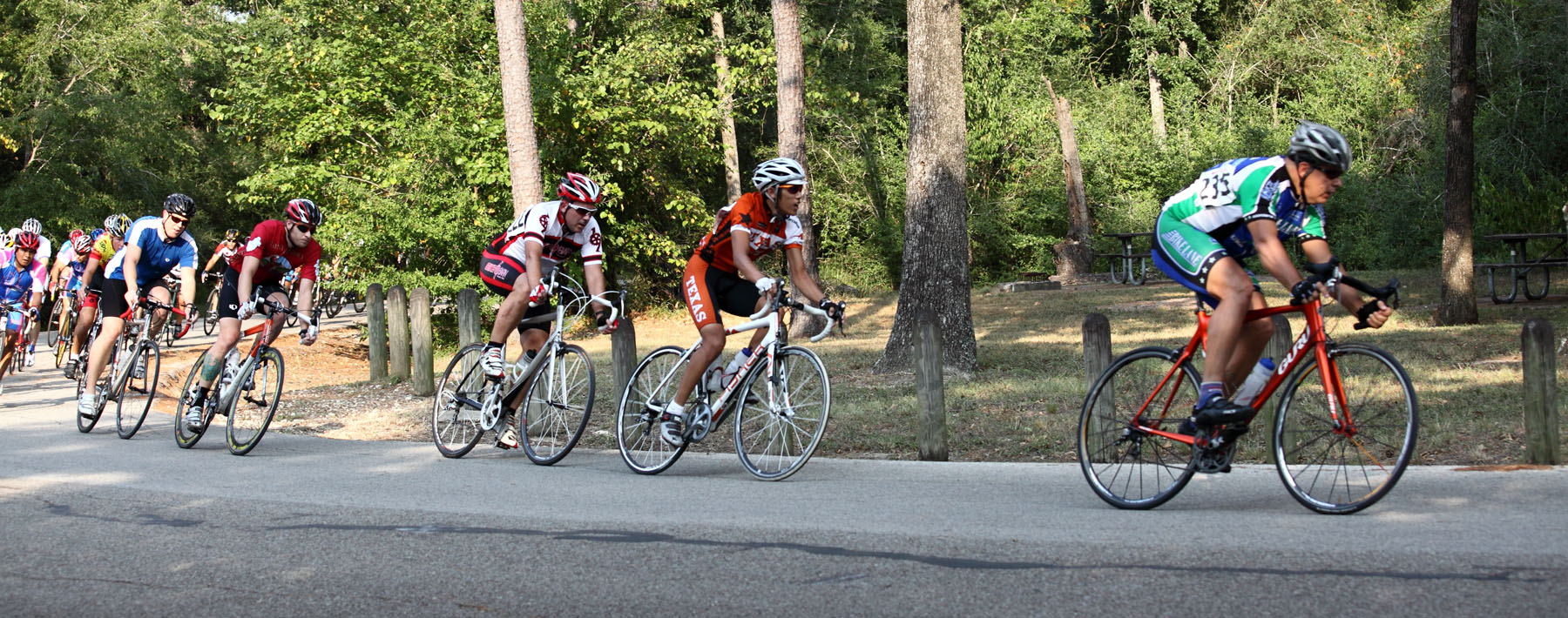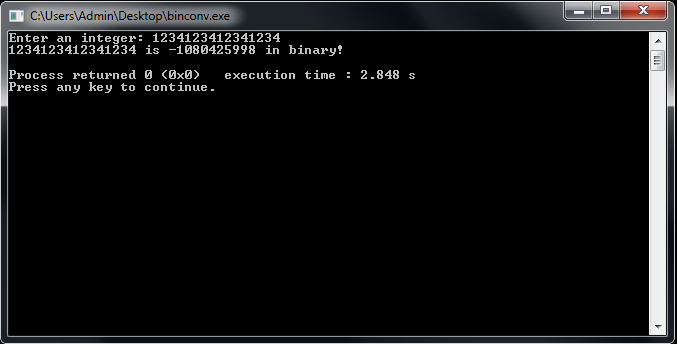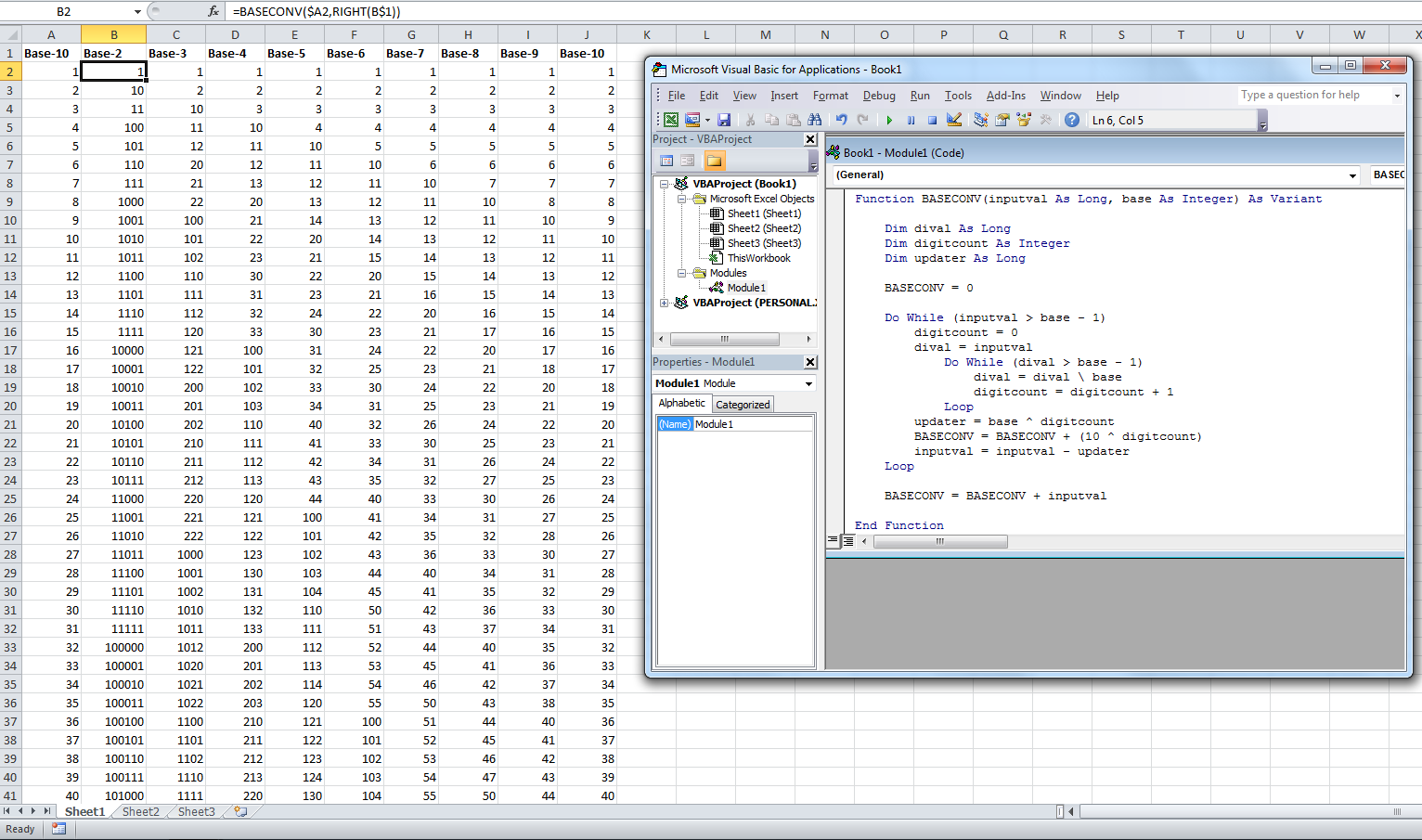Hey everyone,
I’ve got a long overdue report of a race that happened last August, called Memorial Park Criterium. This was just one particular iteration of the Memorial Park Criterium Series, which happens every summer. Unfortunately, I did not know about the series until my friend Ken Day wrote in his blog about his participation…and crash. Anyway, over the summer I’ve been riding with a club called the Space City Cycling Club, which leaves at Bike Barn every weekend at around 7:00 – 7:30 AM for about 60 miles around Alvin and San Jacinto. They have 4 groups based on speed, 14mph, 17mph, 21mph and 24mph. I started with the 14mph group and quickly moved up to the 21mph group where I did the majority of my pack riding for the latter half of 2010. After a while, I decided to ride with the 24 group but I’ve been getting dropped a lot since they tend to go past 34mph at times, speeds at which I cannot hold tempo for long periods of time…yet. In addition to riding with the club, I’ve been doing my own speed work called interval training, which involves doing alternating efforts of hard/easy riding. Intervals help improve the power which you can produce at lactate threshold and help you get accustomed to the high-intensity of racing. Many people who are unfamiliar with cycling don’t realize that racing involves a series of sharp accelerations and cool downs – unlike the steady tempo that may seem intuitive to a novice. Thus, doing easy/hard alternating efforts helps one train like they race. With respect to racing, I had taken a break from racing for over two months, and I was ready to get back into competition, hoping that all my work paid off. Side note – You will notice in the photos that I am riding a new bicycle. I bought one of the team bikes before I graduated and this is the first race at which I rode it.
Before the race, I had just spent about a week in Chicago so I only had about a week after I got home to train for the race. Thus, I wasn’t exactly sure of myself if I would be able to perform well, but since I had performed somewhat poorly in the last handful of races my expectations were low for the race, “stay in contact for 15 minutes, that’s all I’m asking. If you can do more then do it.” Remember, crit racing is very short, only 25-60 minutes but the speeds are very high, and often average higher than 25 mph, even for very technical courses, so you’re more or less at lactate threshold the whole time. On the day of the race, I had just passed my second actuarial examination so I was in good spirits. My dad and I drove to Memorial Park that afternoon and I did the usual routine – unpack, prepare my bike, register, and warm up.
I did a few warm up laps and a couple of high-intensity efforts to gauge the corners of the course. In my opinion, they weren’t bad at all. There were no U-turns, unlike the Driveway, and the roads were not too cracked, though they were not smooth like that of the Driveway. I felt like I wouldn’t have nearly as much fear cornering as I would have had at the Driveway. After the warm up, the Cat 5 racers lined up. I saw one rider wearing a regular t-shirt and jeans shorts and I was wondering if he was half-joking. I didn’t see him again after we started so I was assuming he was new to the race. Anyway, after we were all sizing each other up for the few awkward minutes of waiting, the race officials blew the whistle and we were off.
Immediately, the speeds kicked up to about 24mph, but I was getting a good draft off the people in front of me so I wasn’t bothered at all. I continued to use my tactic at the Driveway of mimicking exactly how the rider in front of me cornered, so I wouldn’t lose my mind when we went through the corners fast. After a few minutes we started seeing a few attacks off the front but none of them went anywhere. About a couple of laps later, perhaps the 8th minute or so, the person in front of me bolted off of the pack and I followed him – soon we formed a 4 man breakaway but that lasted only a few minutes. The race continued in a similar fashion, with people jumping off the front and getting reeled in. At one point my fear of cornering got the better of me and I accidentally cut someone off – the people behind me yelled at me, so I was a little started but I knew they yelled for good reason – for the safety of all the riders involved. I heeded their criticism and made an effort to stay steady the rest of the race.
When I finally reached the 15-minute mark, still in contact with the pack, I knew I had reached my goal, so I tried to stay with the group for the remainder of the race. I was doing remarkably well, staying near 8th position for most of the race. At the final lap one of the riders decided to put in an attack and I followed him. Soon, I passed him in the front and I was leading the race at the final lap! It felt incredible, I never thought I would be in such a good position at this point in my training. However, near the last 300m of the race, I ran out of steam and the tempo picked up for a sprint finish – I wasn’t able to compete in the sprint but I stayed with the pack until the end, my first pack finish in a race since Tunis-Roubaix, my first race.
First, the bad news. Of course, I didn’t win. I went too early and had I not attacked at the end I would have had enough energy to contest the sprint. Then again, it was probably better for me to at least try to attack so I could gain the experience of doing so, since, after all, it was just a minor criterium race. Second, I was too apprehensive in the corners, still. I had improved, but it’s still not at the level where I feel that others can trust me with my handling skills, so I will continue to work on that. Otherwise, everything else went better than expected, I had made my goal and exceeded it, and I knew that my hard work and interval training was paying off, and that I was moving in the right direction.








